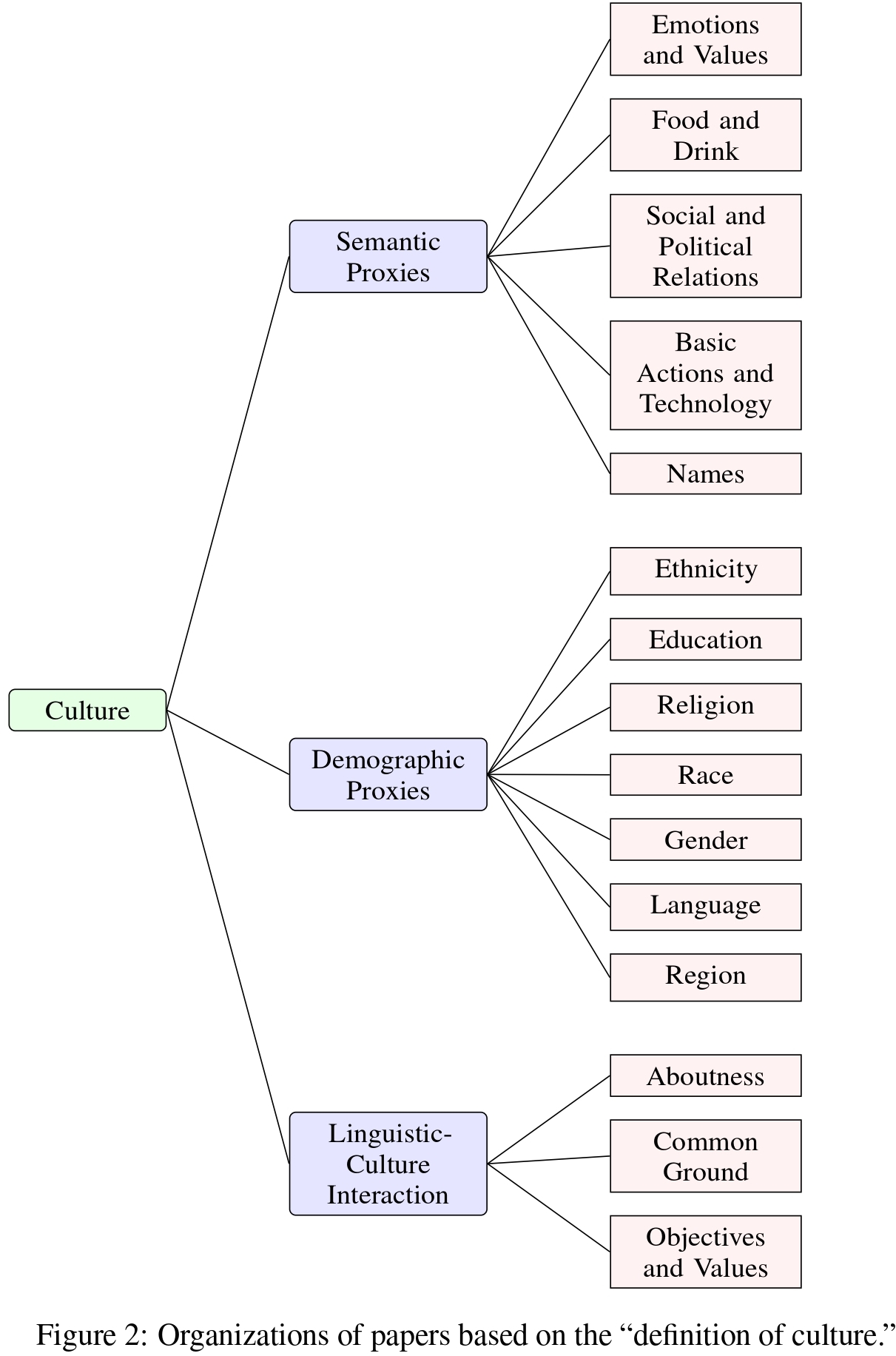Towards Measuring and Modeling "Culture" in LLMs: A Survey
We present a survey of 39 recent papers that aim to study cultural representation and inclusion in large language models. We observe that none of the studies define "culture," which is a complex, multifaceted concept; instead, they probe the models on some specially designed datasets which represent certain aspects of "culture." We call these aspects the proxies of cultures, and organize them across three dimensions of demographic, semantic and linguistic-cultural interaction proxies. We also categorize the probing methods employed. Our analysis indicates that only certain aspects of "culture," such as values and objectives, have been studied, leaving several other interesting and important facets, especially the multitude of semantic domains (Thompson et al., 2020) and aboutness (Hershcovich et al., 2022), unexplored. Two other crucial gaps are the lack of robustness and situatedness of the current methods. Based on these observations, we provide several recommendations for a holistic and practically useful research agenda for furthering cultural inclusion in LLMs and LLM-based applications.
PDF Abstract